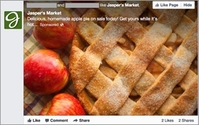
Say goodbye to the stigma associated with native advertising.
Following The New York Times’ official embrace of the once-controversial ad format, J.P. Morgan is predicting that native will take over digital channels in 2014.
“We believe native ads are quickly becoming the de facto ad format on mobile and increasingly moving into desktop,” lead analyst Doug Anmuth wrote in J.P. Morgan’s annual “Nothing But Net” report, released on Thursday.
It is significant that Anmuth and his colleagues are tying the success of native to mobile, considering that they expect ad dollars devoted to the channel to overtake desktop dollars this year.
As for what makes native ads so special, J.P. Morgan calculates that they deliver a huge bang for the buck. Indeed, according to the securities firm, native ads represented just 5%-to-10% of Facebook’s impressions in 2013, but accounted for more than 60% of the company’s revenue.
“We think native ads also have significantly higher click-through rates than traditional display ads, which leads to higher pricing over time,” according to Anmuth.
But, what makes native so well-suited for the mobile medium? “Native ads are ads embedded in a [Facebook] NewsFeed or [Twitter] stream and in many cases closely resemble organic content, making them much more likely to get clicked on compared to historical banner display ads,” according to Anmuth and his team.
As a result, “we believe a growing interest in mobile advertising from brand advertisers coupled with improving mobile ad formats suited for smaller screen sizes should help to bridge the gap between time spent on mobile and mobile marketing spend.”
Moreover, “while the majority of Facebook and Twitter ad revenue is now generated through native or feed ads, we believe other publishers, such as LinkedIn and Yahoo, are also increasingly shifting inventory to the format.”
Last year, eMarketer predicted that the native niche would hit $2.85 billion by 2014. Yet industry thought leaders have implored publishers and brands to rethink their use of native advertising.
“Publishers should say ‘no,’ more than ‘yes’ to native,” Steve Rubel, executive vice president of global strategy and insights at Edelman, told attendees an the OMMA Native conference, in November. “As an industry, we’re going way too fast.”
 RSS Feed
RSS Feed